This is a follow-up to the earlier book review of Brain Bugs, by Dean Buonomano. The author raised an interesting bit of speculation within that I wanted to examine – first noting that the likelihood to establish any such speculations as accurate or even worthwhile is pretty slim. This is more of a thought exercise.
In chapter 8, Buonomano admits to leading away from the clinically-supported findings of human brain functions that he had dealt with in previous chapters, and venturing into speculative realms about how supernaturality and religion enter into the picture. It’s a worthwhile avenue of investigation, since they’re common aspects of many cultures even when specifics are so wildly disparate. In fact, many people point to the widespread belief in “god” as a point of evidence supporting such an existence; this ignores numerous factors, such as how this only works if the definition of “god” is loosened to be exceptionally vague; that a population of people believing without evidence is no stronger than an individual who does so; and that such an argument only indicates how swayed we might be by social drives and the desire to blend in. These are fun points to examine in and of themselves, and Buonomano actually tackles some of them elsewhere within the book.
All of that sidetracks from the primary question, which is why supernatural beliefs spring up. Buonomano suspects that the tendency to see non-human, directed causes for any particular occurrence (such as lightning, volcanoes, etc.) – something that is easier to term as agency – is evolved into our brains, and he isn’t alone in this speculation. The followup question, of course, is how such a thing could have evolved in the first place. At this point, the layperson speculation is often that if it did, it must have been for some benefit, but this isn’t exactly right. Two other types of properties can spring up within natural selection: neutral traits, which do not provide a benefit but also provide no detriment either, possessing nothing to select for or against; and ‘co-opted’ traits, which provide a benefit but in a different way than they may currently be used. Buonomano gives the example of human interest in sports, which really doesn’t provide any benefit, yet at times in the past, emphasis on both competitive physical activities, and just the tribal support for those that participated (sports fans,) could have been important factors in the strength of the tribe.
In support of the idea that a belief in agency is evolved, Buonomano offers a study where children watched a puppet show where a mouse was eaten by an alligator, then asked if the mouse was still scared of the alligator; most of the children answered, “Yes.” Buonomano also references studies where patients are asked about their beliefs, and outright transcendental experiences, while serotonin inhibitors were being tested, or when portions of their brains had to be removed because of dangerous lesions; both gave indications that the posterior areas of the parietal cortex has significant influence in supernatural thoughts. The study with the children indicates that belief in, at least, life after death may be ingrained, while the brain studies indicate that certain portions of our minds may be conducive to thoughts of agency. We’ll come back to this in a moment.
Buonomano also points out that animals often show a belief in agency, demonstrated by dogs growling at windblown umbrellas (an actual example from Darwin) only when someone else was not present near the umbrella to have caused the movement. It’s easy to see something similar in cats chasing leaves (or every other thing that twitches or squeaks.) This leads him to speculate that believing in agency may be very widespread in the animal kingdom (of which we are part,) but that one of the primary differences in humans is instead the ability to recognize the part played by undirected physics; in other words, to not see agency in everything. I say again that this is all admittedly speculative.
From there, Buonomano gives three principle areas of reasoning [paraphrased here] towards how agency may have evolved within us:
1. The ability to separate problems into categories such as solvable [how do plants grow, and can we grow our own] and unsolvable [what makes the rains come] may have allowed our ancestors to focus attention on useful functions;
2. Belief in agency could have strengthened tribal cooperation, providing for group-selection aspects of evolution such as altruism;
3. Refinements in the belief in agency could have led to organized religion, which would have further reinforced itself by introducing moral codes and community guidance beyond the tribal level.
I bring this chapter up because I’m in disagreement with much of it, even though I think not only that examining the topic from this standpoint is a great way to get people to recognize how our minds evolved, but Buonomano paid due diligence in offering support for his speculation. Yet I think there are other factors to consider. I have previously written on exactly this topic, and some parallels are able to be seen, but there are a few problems that I’m finding in his supporting studies.
We’ll start with the account of children and the idea of life after death. For those interested, the study (or at least one of several along the same lines) can be downloaded here. Notable within is that the older children in the study were less likely to allow for any functions after death, including fear and hunger – but what this indicates is not necessarily an innate tendency to believe in life after death, but an imperfect understanding of death as a mental state (or, indeed, any particular mental state) in younger children. Children are not born with a fear of death, or show any fear of things that can harm them – these are learned responses developed with experience. What may be at work here is a concept of future – what are we planning to do, and what can we hope to experience? How innate is this concept in the mind, as opposed to living strictly in the present, with no planning and no concern over ‘tomorrow?’ Can we say that any other species, such as dogs, has any concept of days beyond the present? If such a thing is a trait of humans, then death is the eradication of future, the destruction of plans and tomorrow. It may not be that children have any concept of life after death, only of future, and it takes time (and culture) to recognize that death is the antithesis of such.
No arguments with the parietal cortex studies, but I will readily admit that these are merely suggestive of brain structures specific to thoughts of (supernatural) agency, and not terribly conclusive in themselves. It does raise some interesting questions about the differences between unknown but human agency (the person who invented the electric toaster,) unknown but mundane agency (why earthquakes are hard to predict,) and supernatural agency (what started our universe; I find it amusing to note that I struggled to find an example that is still held by some as ‘supernatural’ that isn’t already explained.) There are far more people who accept earthquakes as natural physical occurrences than the beginning of the universe being the same, yet in what ways are these different, or at least seen differently?
Agency itself isn’t terribly surprising either, in any species of animal. As Buonomano points out, when you hear something rustling in the bushes, it might be the wind blowing leaves, or it might be a jaguar – erring on the side of complacency is going to get bred out of any species in relatively short order. Every species that has any significant external sensory mechanisms such as sight, hearing, and such have them for two primary reasons: to find food, and to escape danger. But nothing could escape danger without at least inferring that something could be dangerous, and that’s agency. But his speculation that we are unique in not seeing agency is reaching too much, I think. Anyone watching a puppy dealing with a new toy can see the process of determining the lack of agency play itself out, and from my own experience, I’ve watched plenty of animals that openly ignore traffic, even close by at high speeds – but if we stop the car and get out, the fear of agency takes over and they skedaddle. Seeing a lack of agency seems to require observation for patterns of cause-and-effect in more species than our own.
So, what about the ability to differentiate between solvable and unsolvable problems? This is very hard to support when considering actual behaviors, both past and present. We’ve all heard of rain dances, and the entire process of sacrificial offerings throughout many cultures shows a lack of distinction between solvable and unsolvable factors in life (and offers a realm of speculation all on its own.) Even today, people pray by the millions, often to bring about miracles which certainly fall into the unsolvable category. This doesn’t seem to demonstrate that we have an evolved trait to distinguish between them.
However, the attention we pay to patterns, and cause-and-effect scenarios, may help explain this aspect a bit better (Terry Pratchett even approached this obliquely in the novel Small Gods.) If we make any kind of connection between an event/action, and a subsequent event, we often assume the former caused the latter, without requiring a significant amount of repetitions – we tend to believe in the cause-and-effect scenario much quicker than we can persuade ourselves that no such thing is present. This shows in how often someone has a ‘lucky’ talisman, and is wildly prevalent in sports – even in our inability to fathom random factors (winning streaks, the payoff is ‘due,’ and so on.) Coupled with this is the influence of confirmation bias, where once we start to consider something as a cause, we give greater emphasis to factors which support this conclusion, and ignore or downplay those which fail to.
We have plenty of reasons to see patterns, and this ability might be one of the primary players in our distinction from other species. Yet, over-emphasizing this ability/desire causes us to see patterns where they do not exist, and this can be coupled with, or even a contributing factor within, the belief in agency. We also have a strong drive to figure things out, actively seeking cause-and-effect scenarios, and this is strong enough to make us experiment constantly to see just what happens. Moreover, it is so active that we engage in pointless activities such as solving puzzles and word games, pleased with ourselves (no doubt fomented by an internal chemical reward system) when we unscramble the letters to find the word “angered” – unless the target was actually “enraged.” Which is a secondary part of this formula, because we also get frustrated when we fail to figure things out, or are wrong. In the circumstances that Buonomano considers the ‘unsolvable’ puzzles such as natural disasters, we don’t simply shrug and accept that they’re a mystery; consider how much effort we put into cancer research, and our overall reactions to even the word “cancer.” Instead, we still want answers, and supernaturality was/is one way in which we derive an answer without actually having one. In effect, it’s a placebo, but in many cases enough of one to ease the frustration of the unsolvable puzzle. Conversely, for countless atheists including myself, religion was abandoned (at least in part) because it didn’t answer questions, even when so many proponents claim that as its most useful trait.
Much the same may be said for the very simple factor of fearing death. No case needs to be made for the evolutionary benefits of such a thing, nor its presence in most other species. The question about how we jump from fearing death to outright denying it is the most curious part, but like many things we presently take for granted, it needs to be shown that this is not culturally influenced rather than a natural aspect of our brains. And, since we are a social species that depends so measurably on interacting with others almost constantly, is denying the finality of death merely a way of dodging the pain we feel from the death of others?
This brings us to the social benefits of finding agency, point 2 of Buonomano’s. Can agency really be said to contribute to altruism? He extends the idea that group acceptance of agency would lead to common cause, tribes that are united in standpoint and goals, which can produce ‘group selection’ benefits. Group selection refers to traits that may not be particularly beneficial to an individual, but if applied throughout a group, will average out to a benefit; honeybees tearing off their stinger is one example, since it kills the individual but the retention of the stinger and venom sac will often kill or drive away the invader of the hive, providing an overall benefit. The same can be said for human tendencies towards warfare, which has obvious detriments for numerous individuals but can benefit the tribe overall. Here, however, there seems to be some confusion over the difference between agency and ideology. It doesn’t take a belief in supernatural causes to stir altruistic activities, just a belief in greater benefit – these might be related in some cases, but do not have to be. Agency, in fact, could just as easily be a detriment to altruism, in contributing to the idea that any particular outcome is controlled by outside forces rather than by individual actions. Agency is, in fact, insufficient; it must be sympathetic agency, something that acts in our benefit, for it to be considered useful in any way.
It gets interesting here, so permit me some sidetracking to deal with it. Agency, even when it exists, isn’t often too sympathetic, and the evolved aspects of seeking it are usually for exactly the opposite purpose: to determine if the rustle in the undergrowth is a threat. Many of the stunning natural displays that we once credited to agency – floods, lightning, volcanoes, earthquakes, pestilence, plague, etc. – don’t fit the bill either. In order for us to cope with what appears to be antagonistic agency, we had to apply the idea that some purpose is greater than the detriments, or that we deserved our fates. To produce altruism, first we had to believe in benefit. To some extent, the concept of justice contributes – we get what we deserve, and if ill fortune befalls us, we did something to generate it. But this is most likely a corruption of a social drive within our species simply to foster cooperation, keeping the tribe strong by dealing with beneficial and detrimental members, and is visible in countless species. If we start to consider the agency to be very similar in thought processes to our own species (rather than, for instance, like a wolf or alligator) – “made in his image” is a phrase that comes immediately to mind – then we can believe that such agency plays by the same social rules, and even becomes a father figure.
We constantly make the mistake that human social interactive structures are present in other species, such as when we believe that we can ‘communicate’ with the dolphins or that a squirrel rescued by us feels gratitude – it’s hard for us to get rid of it, actually. But we also have no problem with not applying this to the wolves and alligators, seeing them right off the bat as hostile (which is, again, a social structure of humans – what we mistake for aggression is just hunger and/or defensiveness.) Much of this has to do with appearances – baby animals have traits that we recognize within the newborns of our own species, for which we have instincts to provide care because without those we never would have survived as a species. Those species with less human faces, or with apparent expressions that communicate hostility (compare the ‘glaring’ eyes of the wolf with the ‘smiling’ face of the porpoise) fail to gain the perceived traits of social similarity to us. It seems very unlikely that any perceived agency without a face would commonly be seen as sympathetic, especially in cases where the effect on us was detrimental (floods etc.)
Now, consider something else for a moment. If, as Buonomano suggests, other species like wolves also believed in agency, what form would it take for them? Since the communication of any particular concept isn’t going to take place, the agency in each individual’s mind is likely to be formed only by their own experiences. One might see snakes as representing antagonistic agency, another bears, and sympathetic agency might be represented by whatever they experienced in avoiding such dangers. So for agency to be considered altruistic within our ancestral tribes, it would have to be a cohesive concept of such, and likely could only arise after we had a decently developed language.
From my perspective, this was one of the key factors in the establishment of religion. As nomadic hunter-gatherers, the detrimental aspect of antisocial behavior would contribute to it being easily weeded out, and goads towards any particular moral code (typical of religions) would have been as unnecessary then as it is now for any other species. Given any concept whatsoever of justice or fairness, freeloaders would easily be shunned or punished by other tribal members and any genetic influence towards such behavior would be selected out fairly quickly. But once the establishment of fixed farming communities arose, the tribes could grow in size, and the immediate repercussions of laziness or selfishness would start to falter, especially in the face of the curious mental recordkeeping of how hard someone worked that past summer in order to deserve their share of stored food come winter. Villages could become big enough to make personal knowledge of everyone within difficult. The pattern-seeking aspects of our ancestors could also have easily demonstrated that greater benefit might come at the expense of others, and tribes could have started losing cohesiveness in favor of selfishness, much like our corporate profit structures today; this does presume that the drive towards survival is stronger than the drive for justice, but that’s not particularly hard to believe is the case. This is where the threat of ultimate consequences, a consistent concept of agency, begins to have the greatest benefit within any society – even if it seems pretty slick now, you’ll earn your punishment in the end! It also exploits any belief in life after death. But this can only be of use if the concept is both widely accepted and communicable, and seems unlikely to have arisen at any point in time before the establishment of villages. In evolutionary terms, however, this is far too recent to have had much if any influence on naturally selected traits; we can find evidence for villages only back about 10,000 years, while the history of Homo sapiens as a distinct species goes back somewhere between 100,000 and 200,000 years. Villages are far too recent to have influenced natural selection significantly.
So, I find myself in agreement with point 3 of Buonomano’s, but not in how we might’ve gotten there. And I think, as outlined in the same post I linked to previously, there were lots of other factors at work. We’re still left with how we made the jump from agency (often antagonistic) to sympathetic agency – until we go one step further in this process of cohesive concepts of agency (a god with specific traits,) and realize that any other tribe is unlikely to have the same concept of agency. In the circumstances where any tribe has conflicts with another, agency – especially that derived from pattern-seeking behavior – gets reinforced by anything that brings about a benefit to one’s own tribe. It’s not necessarily the tribes competing at this point, but the favor of the gods bestowed upon the tribes, indicating that those animal sacrifices or devotional chants weren’t in vain (getting an additional boost from mere ego, as well – ours likes us better, and/or my daddy can beat up your daddy!) This is where religious-linked altruism can be fostered, but only after a cohesive concept of agency has been established, and only in cases where benefit can in some way be derived from such agency.
What we’re intruding into here, however, is cultural influence, not evolutionary – nurtured religion, not natural instincts towards such. There is a chance that tendencies towards belief in supernatural (sympathetic) agency might have influenced our ancestors in conflict, in believing that they had more power on their side, but this would only affect selected traits of a species in interspecies conflicts – human genetic variation would be overcome by intertribal mixing, and a psychological ‘edge’ is a weak trait in comparison to honest aggression and body size. In other words, such a trait may have separated us in a distinctive way from Neanderthals (and any other concurrent hominids,) but there seems little avenue to develop it otherwise and other traits are more likely to be selected for naturally.
To be forthright in all of this, Buonomano has a hell of a lot more education than I, and is exposed to a lot more studies as well – he may know of supportive factors for his standpoint that he didn’t enumerate within the chapter. Not to mention whatever I might have missed in my own suppositions. Yet, the point I’m making is that I think there are aspects that he didn’t account for in his speculations, and that religious tendencies may well be explained by other factors of our development. It is unlikely that we could ever prove any of it, since evolutionary psychology is all ‘after the fact’ and open speculation about traits we developed millions of years ago – the best we can do is build a case that sounds plausible, since there’s very little to test empirically. That’s philosophy, which is likely of limited actual benefit – what sounds right is only slightly more useful than what feels right. What this can demonstrate, however, is that there are ways of explaining religious tendencies in a species as a quirk of evolutionary development, trashing the hackneyed idea that it is either beneficial, or actual evidence of supernatural influence. Which beats hell out of the typical “Well, you can’t prove that god doesn’t exist” arguments in favor of actual supernatural agency.




















































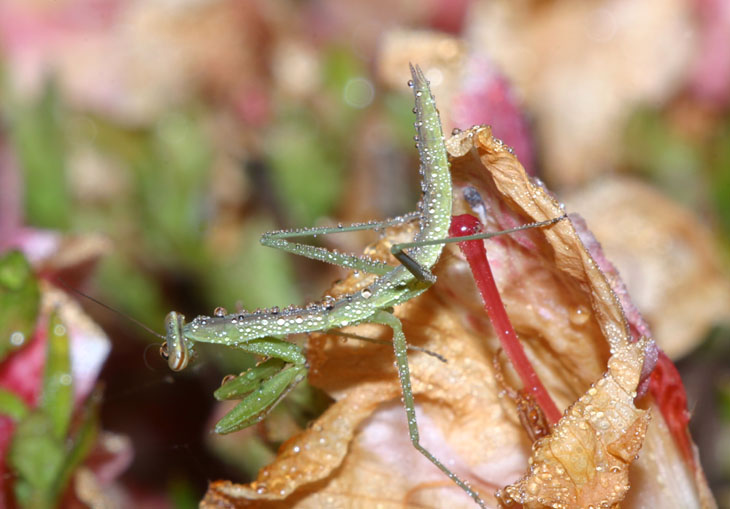
 I thought I was pretty fortunate to discover a few tiny praying mantises on the azalea bushes out front yesterday, until I went out this morning right after sunrise when the dew still hadn’t cleared…
I thought I was pretty fortunate to discover a few tiny praying mantises on the azalea bushes out front yesterday, until I went out this morning right after sunrise when the dew still hadn’t cleared…
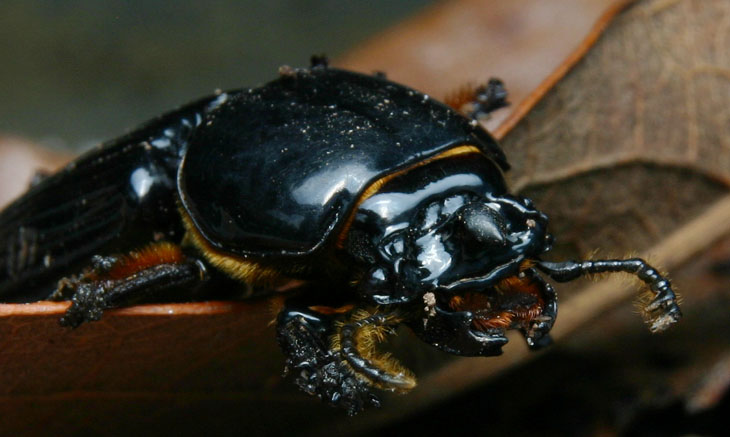
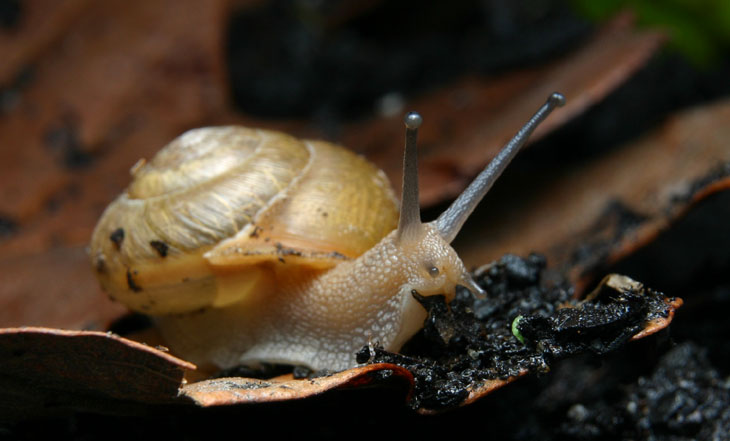

 Yet, people are notoriously bad about knowing or remembering anything about their local snakes, so most water snake species get killed in the belief that they are either Cottonmouth Water Moccasins (which are not found in central North Carolina) or Copperheads (which are, but are much rarer than water snakes and
Yet, people are notoriously bad about knowing or remembering anything about their local snakes, so most water snake species get killed in the belief that they are either Cottonmouth Water Moccasins (which are not found in central North Carolina) or Copperheads (which are, but are much rarer than water snakes and 
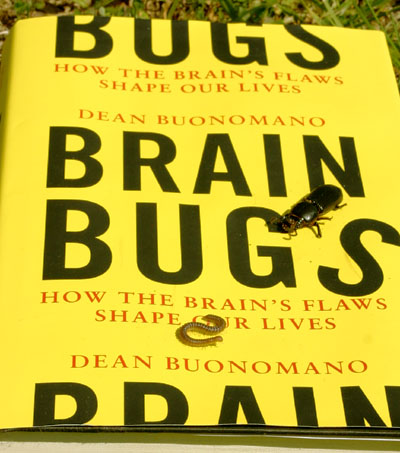
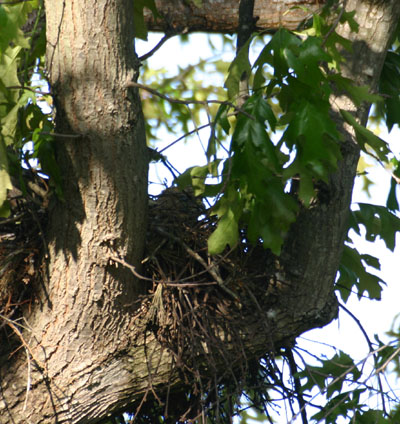 Meanwhile, I’ve been keeping an eye on the local Red-shouldered Hawks, but it’s gotten more difficult. The female has built the nest up a little more so she’s often obscured by twigs around the edge, and a few tiny branches right near the nest produced far too much foliage – most of my lines of sight are blocked, and the nest remains almost perpetually in shade. Yesterday evening, as the sun was low and the wind was blowing fiercely, I fired off a few dozen frames attempting to catch her when the leaves moved aside and the light broke through, but the light never reached her position – they knew what they were doing in choosing that location. The photo at left, while still a crop from a larger frame (the best I can achieve right now with the 170-500mm lens,) shows the conditions I’m attempting to thwart, while the image below is a full-resolution portion of the same frame; you can see the female’s head turned to the right, beak slightly open. It’s obvious I won’t see any nice views of her feeding the young when they’ve hatched unless I manage to get up a nearby tree, but if I have my timing right I might catch the early fledging behavior and first flights. I have no climbing gear (and not even a ladder right now) so the idea of just getting up a tree for a better vantage is easier said than done, and I might simply find that my views from there are no better than on the ground (having to deal with the foliage of the tree I’d be within, as well.) We’ll see what happens.
Meanwhile, I’ve been keeping an eye on the local Red-shouldered Hawks, but it’s gotten more difficult. The female has built the nest up a little more so she’s often obscured by twigs around the edge, and a few tiny branches right near the nest produced far too much foliage – most of my lines of sight are blocked, and the nest remains almost perpetually in shade. Yesterday evening, as the sun was low and the wind was blowing fiercely, I fired off a few dozen frames attempting to catch her when the leaves moved aside and the light broke through, but the light never reached her position – they knew what they were doing in choosing that location. The photo at left, while still a crop from a larger frame (the best I can achieve right now with the 170-500mm lens,) shows the conditions I’m attempting to thwart, while the image below is a full-resolution portion of the same frame; you can see the female’s head turned to the right, beak slightly open. It’s obvious I won’t see any nice views of her feeding the young when they’ve hatched unless I manage to get up a nearby tree, but if I have my timing right I might catch the early fledging behavior and first flights. I have no climbing gear (and not even a ladder right now) so the idea of just getting up a tree for a better vantage is easier said than done, and I might simply find that my views from there are no better than on the ground (having to deal with the foliage of the tree I’d be within, as well.) We’ll see what happens.
